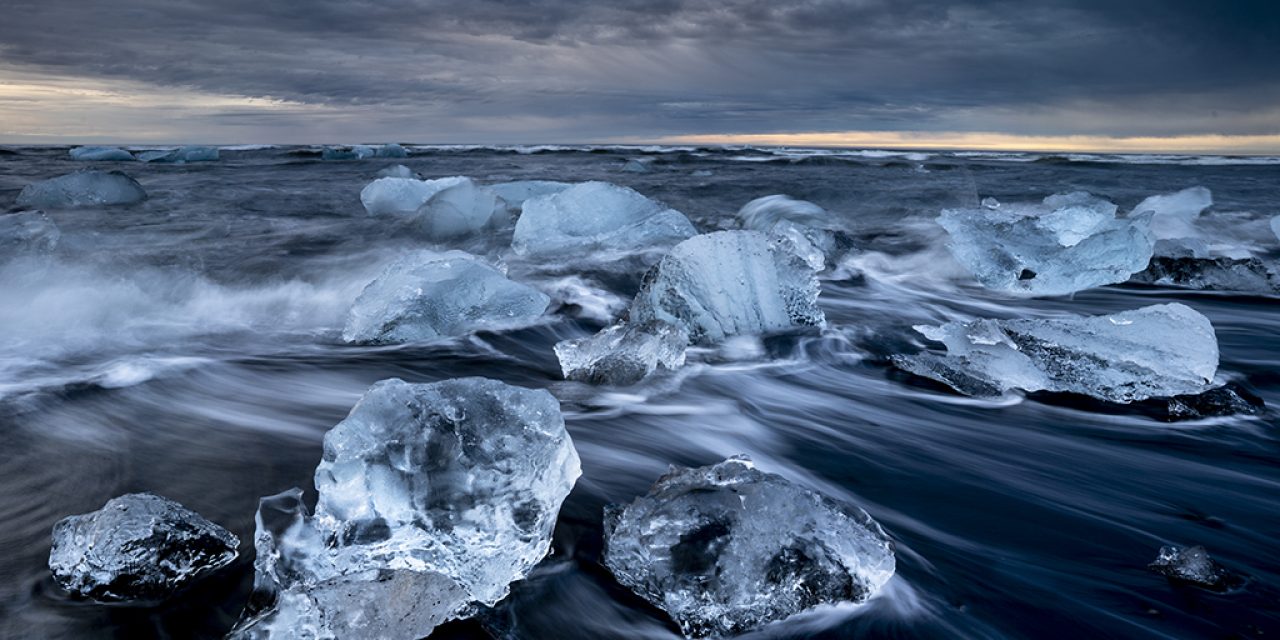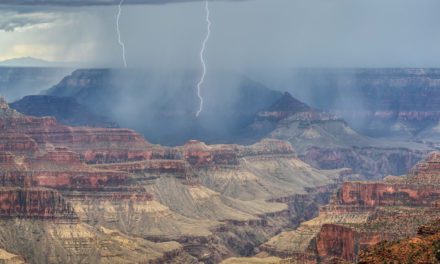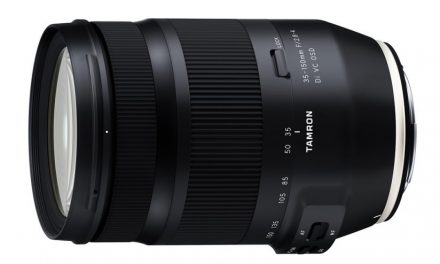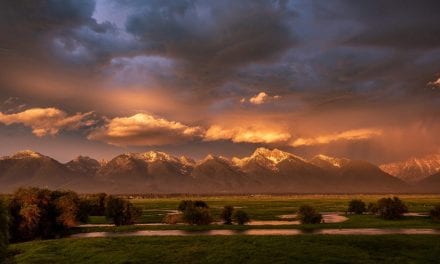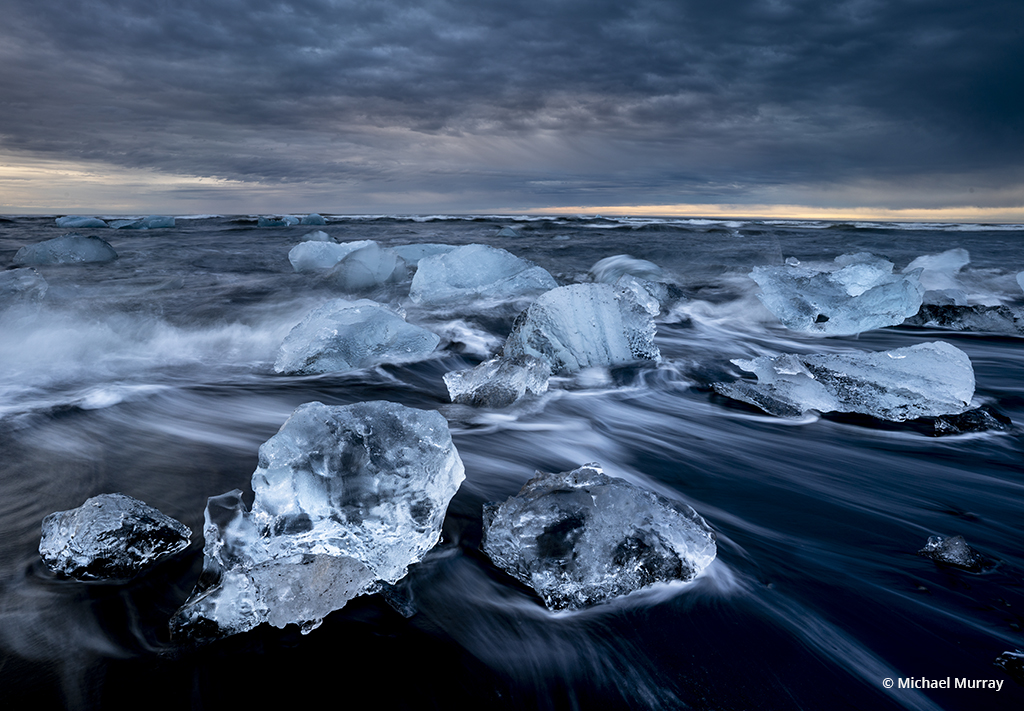
Our family drove an RV around Iceland’s Ring Road last summer. Having a moveable home base allowed us to see quite a lot of the fjord-tucked villages and vast coastline of the island. The RV also let us stay overnight near the locations I wanted to capture.
I was most excited to shoot on Diamond Beach. This stretch of black sand sits at the mouth of the Jökulsárlón Glacier Lagoon. Ancient pillars of ice calve off the glacier and flow out to sea only to be pushed back to land by the North Atlantic current. The ice washes ashore in chunks that range in size from baseballs to Volkswagen Beetles. We parked the RV on the bluff above the water for the night. Though there were many tourists and photographers on the beach during the day, I was alone when I woke up for the summer sunrise at 2 a.m.
For 10 minutes, I played chase with the waves. I’d plant my tripod, frame a shot and then retreat when a swell came in. I hadn’t thought to bring water boots on the trip. In fact, the shoes on my feet were a brand-new pair of hiking sneakers I had purchased the previous day as a vacation splurge. Even with a tethered release allowing me a couple feet of latitude, I couldn’t man my station long enough to achieve the white, wispy long-exposure look I wanted in the surf. That’s when I decided the shot was more important than the shoes. I allowed the next surge to fill my soles with arctic water. Now I was ready to work.
A 0.8-second exposure rendered the “ghostly” sea churn I envisioned. A variable ND filter I had picked up just before the trip for shooting Iceland’s waterfalls allowed me to dial in the exposure timing without having to change my aperture value. I moved from berg to berg looking for clean, clear ice and balanced frames. A little bit of orange entered the sky. With an 18mm wide-angle lens, I had to stand within a foot of the ice to anchor it properly in the foreground. During one exposure, as I was locked into the viewfinder, a large wave shot an anvil of ice into my shin and sent my rig teetering toward the surf. I caught it just before the tipping point. After an hour of shooting, I drained the arctic water and black sand from my shoes and returned to the warmth of the RV. I changed out of my wet clothes, set up my laptop in the bunk—careful not to wake my slumbering family—and greedily reviewed my morning’s work.
See more of Michael Murray’s work at natureindepth.com and on Instagram @wellframed.
Sony a7R III, ZEISS Batis 18mm f/2.8, B+W Vario ND filter. Exposure: 0.8 sec., ƒ/16, ISO 160.
The post Behind The Shot: Diamond Beach appeared first on Outdoor Photographer.

